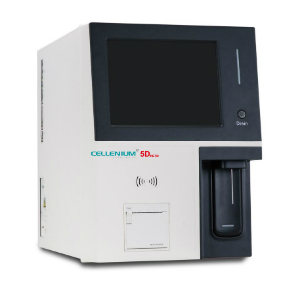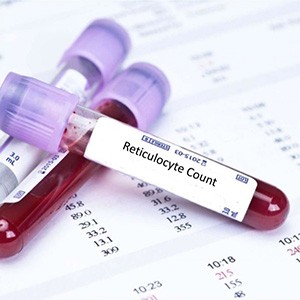A reticulocyte count (or commonly known as retic count, corrected reticulocyte count, or reticulocyte index) is a test which doctor can use to measure the level of reticulocytes in patients’ blood.
Results obtained from the reticulocyte count can help the doctor learn if the patient’s bone marrow is producing enough red blood cells. If a patient’s red blood cell count is too low or too high, the patients’ body will try to achieve balance by producing and releasing reticulocytes accordingly. The pathologist can tell whether a patient’s body is creating and releasing them properly by going for a reticulocyte count.
Historically, reticulocyte count test was considered as a confirmatory diagnostic test for regenerative or nonregenerative anaemia, however, recent findings are suggestive of leveraging reticulate count test as a test to obtain various critically important information on the health of all patients, regardless of his anaemia status.

Reticulocyte at a Glance:
Reticulocytes are immature red blood cells, which are released from the bone marrow into the circulation one to two days before maturation. An increase in the reticulocyte count reflects an increase in red blood cell production (erythropoiesis) to meet physiological demand, for example in the case of haemolytic anaemia.
Reticulocytes contain ribosomal RNA, which can be detected by two main methods. When unfixed red cells are incubated with dyes such as new methylene blue, the ribosomal RNA precipitates out and appears as a blue reticular network within the cells, which can be visualised using a light microscope, allowing the reticulocytes to be counted. Most automated FBC analysers now perform reticulocyte counts by flow cytometry, using a fluorescent dye that binds to the ribosomal RNA; the number of reticulocytes can be expressed as a percentage of total red cells and as an absolute count.
Reticulocyte Test Method:
Reticulocytes are immature red blood cells containing residual RNA. Reticulocytes can be counted by instrumentation or by haemocytometer. Automated reticulocyte counts are performed similarly to automated RBCs. Before counting, red blood cells are stained with a dye that stains for nucleic acid (such as acridine orange) to differentiate reticulocytes from mature red blood cells.
For manual reticulocyte counts, whole blood is mixed with a supravital dye such as new methylene blue and blood smears are prepared. The dye causes clumping and staining of residual nucleic acid present in immature cells. The stained cells (reticulocytes) are counted as a percentage of total red blood cells. The absolute reticulocyte count is determined by multiplying the total RBC by the percentage of reticulocytes. Units for reticulocyte count vary among laboratories but generally are reported in the same units as red blood cells or in the same units as platelets (cells × 109/L).
Reticulocyte in Cellenium 5D retic:
Apart from ABC, RBC and PLT count in Cellenium 5D retic, we have special mode for Retic samples, unlike other 5 part analysers of on-board retic reagent bottle, we provide Retic Tubes containing Retic Dye for testing, user has to add 20 ul of blood to retic tube, incubate retic tube at 37ºC for 15 Min and run the tube in retic mode, user will get results in 60 Sec. The instrument will provide results in absolute count and percentage along with Immature Reticulocyte Fraction.
Cellenium 5D retic also provides results of ALY#, ALY%, (A typical Lymphocytes number and percentage) LIC#, LIC% (Large Immature Cells number and percentage), NRBC#, NRBC% (Nucleated RBCs Number and percentage).
So, with all such special parameters, Cellenium 5D retic is a unique 5 part differential analyser having an inbuilt printer, economic CPT, reliable results and long term durability.



